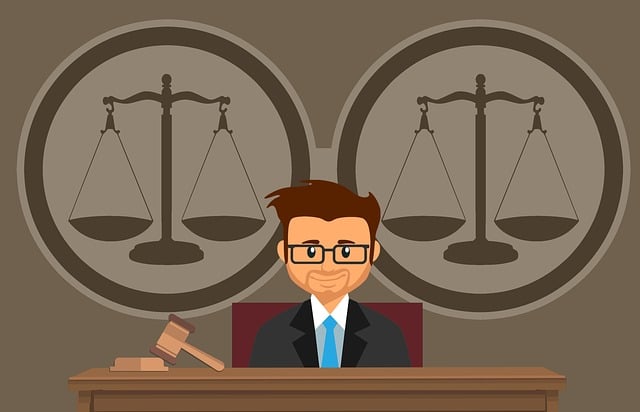Mastering Communication for Successful Pedestrian Accident Claim Settlements

After a pedestrian accident, seeking compensation involves understanding your rights, gathering cruc…….
In today’s fast-paced urban environment, ensuring pedestrian safety is a paramount concern for cities worldwide. The term ‘Pedestrian Accident Claim’ (PAC) refers to the legal and financial process that arises when a pedestrian suffers harm due to an accident involving a vehicle. This complex issue involves a web of legal, medical, and financial considerations, with significant implications for both individuals and municipalities. This article aims to provide an in-depth exploration of PACs, covering various aspects from their definition to future prospects, empowering readers with valuable insights into this critical matter.
Definition:
A Pedestrian Accident Claim is a legal process initiated by a pedestrian who has suffered injuries or losses due to a road traffic accident involving a motor vehicle, bicycle, or other mobility device. It involves the pursuit of compensation for damages, medical expenses, and other related costs from the responsible party, which could be a driver, cyclist, or even a government entity if the incident occurred on poorly maintained infrastructure.
Core Components:
Historical Context:
The concept of PACs has evolved alongside advancements in transportation and safety regulations. Historically, pedestrian rights were often overlooked in the face of rapidly growing urban populations and increasing motorization. However, the 20th century witnessed a shift with the establishment of traffic laws prioritizing pedestrian safety, leading to the development of legal frameworks that protect their rights in case of accidents.
Significance:
PACs serve as a critical mechanism to hold accountable those responsible for causing harm to pedestrians and to ensure they receive fair compensation for their suffering. They also provide a means to improve road safety by encouraging drivers and pedestrians to adhere to traffic rules, thereby reducing future incidents. Moreover, successful PACs can lead to infrastructure improvements, making urban areas safer for everyone.
The impact of Pedestrian Accident Claims is not limited to specific regions; it is a global concern with varying trends across different parts of the world. Here’s an overview:
| Region | Trends | Unique Challenges |
|---|---|---|
| North America | High claim volumes, particularly in urban centers like New York and Los Angeles. Strict liability laws favor pedestrians, leading to substantial settlements. | Complex litigation processes, with many claims involving third-party insurance or self-insurance programs. |
| Europe | A growing focus on pedestrian safety, with many countries adopting strict traffic rules. Claims are often lower in cost but more numerous. | Variations in legal systems across EU member states create challenges in cross-border claims. |
| Asia Pacific | Rapid urbanization drives high claim rates, especially in China and India. Traditional attitudes towards pedestrian rights vary widely. | Limited insurance coverage in some areas, leading to out-of-pocket expenses for pedestrians. |
| Middle East | Strict traffic laws and significant investments in road infrastructure reduce incident rates. Claims are generally lower. | Cultural norms can sometimes discourage pedestrians from pursuing claims, especially if the driver is a known acquaintance. |
Key Observations:
The economic aspects of Pedestrian Accident Claims are multifaceted, impacting both individuals and the broader economy.
Market Dynamics:
Investment Patterns:
Economic Impact on Systems:
Technology plays a pivotal role in modernizing the Pedestrian Accident Claim process, improving efficiency, and enhancing safety:
Government policies and regulations are instrumental in defining the scope and outcome of Pedestrian Accident Claims.
Key Policies:
Legislative Frameworks:
Influence on Development:
Despite its importance, the Pedestrian Accident Claim process faces several challenges and criticisms:
Strategies to Overcome Issues:
Amsterdam, known for its bustling pedestrian culture, implemented a multi-faceted strategy to reduce PACs. This included:
Outcome: Following these initiatives, Amsterdam experienced a 40% reduction in PACs over a 5-year period, proving that comprehensive urban planning and public education can significantly impact safety.
Singapore’s Land Transport Authority (LTA) introduced a digital claims platform, SmartClaim, to streamline the process.
Impact: SmartClaim reduced claim processing times by 30% and cut fraud rates significantly. This case highlights the effectiveness of technology in enhancing efficiency and security within PAC systems.
The future of Pedestrian Accident Claims is poised for significant evolution, driven by technological advancements and changing societal needs.
Potential Growth Areas:
Emerging Trends:
Strategic Considerations:
Pedestrian Accident Claims represent a complex yet critical aspect of urban life, with profound implications for individuals, communities, and economies. As cities continue to grow and transportation evolves, understanding and managing PACs will remain paramount. This article has provided an in-depth exploration of various facets, from definitions and global trends to technological advancements and policy considerations.
By delving into these areas, we can identify opportunities to improve pedestrian safety, streamline claim processes, and foster better outcomes for all stakeholders. The future of PACs lies in embracing innovation, strengthening policies, and fostering collaboration between governments, insurers, and technology providers. With continuous efforts, we can navigate this complex landscape toward a safer, more inclusive urban environment.
Q: What should I do immediately after a pedestrian accident?
A: After a collision, prioritize your safety and that of others. Call emergency services if needed, then move to a safe location. Document the incident by taking photos, exchanging contact details with the driver, and noting down witness statements. Seek medical attention for any injuries, even minor ones.
Q: How do I know if my case is worth pursuing?
A: Every case is unique, but you can assess its potential value by considering the severity of your injuries, the circumstances of the accident, and local legal precedents. Consult a qualified personal injury lawyer who can evaluate your case and advise on the likely outcome.
Q: Can I claim if the other party has insurance?
A: Yes, most cases involve insurance claims. Your lawyer will help navigate the process, ensuring you understand your rights and obligations under your policy or the driver’s coverage.
Q: How long do I have to file a PAC claim?
A: Time limits vary by jurisdiction. In many places, you typically have 3-6 months from the date of the accident to file a formal claim, but some have longer periods. It’s crucial to act promptly to preserve your rights.
Q: What if I’m at fault for the accident?
A: While negligence can impact liability and compensation, it doesn’t necessarily bar you from making a claim. Your degree of responsibility will be considered in determining damages. It’s still advisable to seek legal advice to understand your options.

After a pedestrian accident, seeking compensation involves understanding your rights, gathering cruc…….

Pedestrian accident investigations face significant challenges due to fading memories, varying accou…….

Pedestrian accidents cause not only physical injuries but also significant emotional distress, often…….

After a pedestrian accident, a qualified truck accident attorney is vital. They swiftly assess the s…….

Police reports are crucial documents in a pedestrian accident claim, providing an unbiased, detailed…….

After a pedestrian accident, understanding your rights and potential steps involved in a pedestrian…….

After a pedestrian accident, crucial steps include securing the scene, capturing photos, documenting…….

After a pedestrian accident, understanding legal rights is crucial for fair compensation. A personal…….

After a pedestrian accident, understanding your rights and navigating the claims process effectively…….

After a pedestrian accident in Texas, understand your legal rights to compensation for injuries thro…….